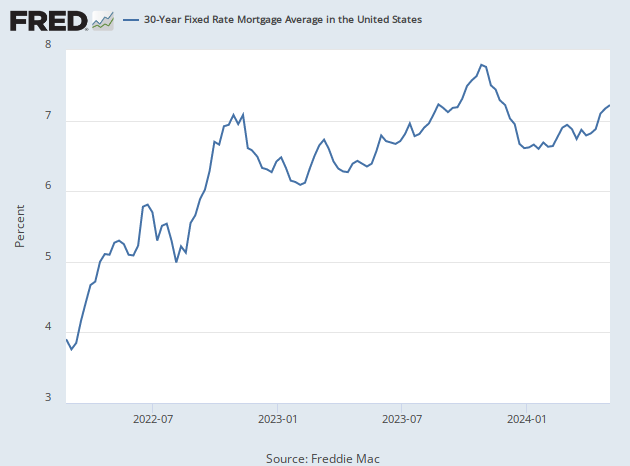Buyers Rush Back into the Housing Market
The reports on Monday on durable goods and pending home sales brought more evidence that the U.S. economy shifted into a higher gear in January.
Pending home sales jumped 8.1 percent in January, the biggest monthly increase since the pandemic housing boom began with the rebound of June of 2020. This not only smashed through the median forecast for a gain of one percent but also broke the top of the estimates of 1.3 percent. In other words, this was a much bigger surge in home buying than anyone was expecting.
Pending home sales are measured at contract signings and turn into final sales a month or two later. The January signings got a big boost from the decline in mortgage rates in November, December, and January. The average rate on a 30-year fixed mortgage fell from just above seven percent in the first few days of November all the way down to around six percent by the end of January.

This surge in sales probably played a large role in the rise in home builder sentiment this month. Lawrence Yun, the chief economist of the National Association of Realtors, said on Monday that he expects the housing market to be “bottoming out” in the first quarter of this year.
That might be overly optimistic. The housing market will have to deal with the reaction function of the Federal Reserve. Fed officials view mortgage rates as a key indicator of the tightness of financial conditions. Surging home sales on lower rates, which in turn boosts homebuilder sentiment, is exactly what the Fed does not want to see at a time when inflation is proving more persistent that hoped.
Already, we see rates climbing back above 6.5 percent, which could dampen home buying and push the bottom of the housing market out past March. Unless there is a significant easing of inflationary pressures, mortgage rates are probably going to continue to climb as the market reassess how high the Fed will have to hike this year. The early November peak may not have been the top for mortgage rates in this cycle.
On the other hand, we have received plenty of other signs that the economy experienced an inflationary boom in January. Retail sales exceeded expectations, job openings rose to 11 million, half a million workers were added to payrolls, unemployment fell to 3.4 percent, and manufacturing production surged. This likely also helped fuel the appetite for home buying.
War Machine and Inflation Boosts Durable Goods Orders
Durable goods orders plunged 4.5 percent in January because of a big retreat in nondefense aircraft bookings. Because airplanes are so pricey and tend to be ordered in large quantities by airlines, volatility in aircraft can make the entire durable goods category bounce around. This is even more true than usual around the end of the year.
In December, for example, Boeing received 250 contracts, leading to a 5.1 percent rise in U.S. durable-goods orders. This month orders fell to just 55. In Monday’s report, the Commerce Department said nondefense aircraft orders surged 105.6 percent in December and then plunged 54.6 percent in January.
Defense spending is still running strong. Orders for defense aircraft rose 5.5 percent in January after jumping 20.1 percent in December. Orders for defense capital goods rose 3.8 percent. Orders for defense aircraft in January were 85 percent above the January 2022 level, driven in large part by the ever-mounting military aid the U.S. has sent to Ukraine.

Ukrainian soldiers prepare a U.S.-supplied M777 howitzer to fire at Russian positions in Kherson region, Ukraine, Jan. 9, 2023. (AP Photo/Libkos)
Orders for motor vehicles rose a skimpy 0.2 percent and shipments were flat. Compared with a year ago, however, orders are up 14.3 percent and shipments up 14.7 percent.
Orders excluding transportation rose by a more-than-expected 0.7 percent, and core capital goods orders were up a better-than-expected 0.8 percent. Core capital goods orders, which subtract out defense and transportation spending, are considered a proxy for business investment. This figure suggests that businesses were more willing to spend in the new year than they had been at the end of last year.
Importantly, however, durable goods orders are not adjusted for inflation. The producer price index’s gauge of private capital equipment prices also rose 0.8 percent. So, real orders were likely flat in the month. The three-month average annualized growth rate in core durable orders works out to 1.3 percent, which is significantly below the three-month average annualized growth rate in the price measure.
That said, holding steady in an environment of soaring prices is impressive and a turnaround from the inflation-adjusted contractions in the previous months.
When job openings and payrolls came in strong at the start of February, many were inclined to discount it as a seasonal fluke. Here at the end of February, we’re still awash in data showing January was a month of unexpectedly strong growth and resurgent inflation.




